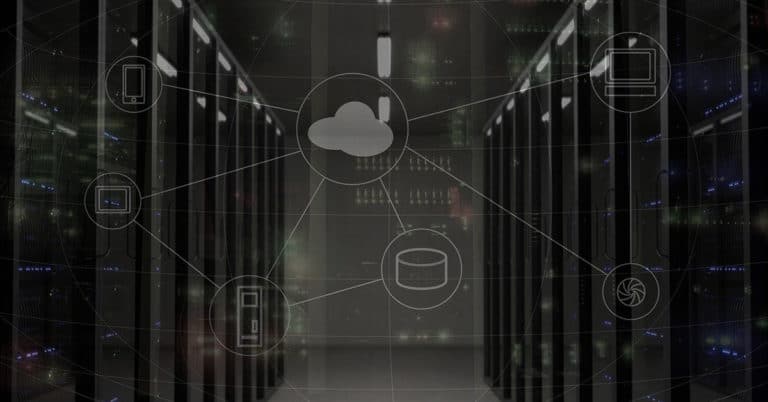Any enterprise-level security company will say that real-time security monitoring is a challenge. However, that doesn’t mean you can’t do it. The key is overcoming obstacles to deploy reliable solutions for real-time monitoring. The best way to do this is with cloud computing.
Real-Time Monitoring Challenges
In the security ecosystem, you’ll face multiple challenges that derail the ability to monitor in real-time. Without it, however, your risks rise when it comes to uptime, response and overall security. This can jeopardize your customer relationships.
Monitoring Fragmentation
How many monitoring systems does a network need? That depends on its structure, size and need to scale. In some cases, you may be using multiple monitoring systems that represent only a segment of the network. This causes a siloed effect in monitoring, which makes it more difficult to troubleshoot and manage because of blind spots created by this architecture.
In the end, you’re dealing with inconsistent systems and inefficient processes. It’s also going to cost you more because you need additional manpower for monitoring systems. Are you going to be able to continue to pass off these costs to your customers?
IT budgets aren’t in a spending mode overall, and there are multiple spend focuses, with the frontrunners being business analytics and security and risk management. However, if you can position a better real-time monitoring solution that’s cloud-based, it will fall into both of those categories of potential spending.
Data Isn’t Accessible
Is crucial data held hostage by the monitoring systems you use? Unfortunately, it’s a common problem for security integrators. Without customer data visibility, it’s hard to make strategic decisions.
Limits of Data Sharing
Monitoring tools can ingest data streams in monitoring. Then, they don’t allow you to share it with other systems or analyze it for holistic intelligence gathering across the enterprise. Data is critical for trend analysis and predictive insights. Without open access, you’re losing out on value and the ability to better secure systems.
Lack of Flexibility
Flexibility isn’t just nice to have. It’s essential. The monitoring space is an ever-changing dynamic, with new threats and concerns daily. If your monitoring solutions aren’t flexible, they may require more time to adjust. For example, what if users must tag every metric? Or, what if you don’t have dashboards that provide specific information in real-time?
You can’t afford to lack agility in real-time monitoring. If processes are too rigid, you can only be reactive instead of proactive.
Slow to React
What’s the biggest issue with monitoring? Typically, it’s the time to react, which is at a snail’s pace when information isn’t available in real-time or takes painstaking searches. When reaction times are slower, risk increases and it could lead to downtime or loss of business continuity.
Implementing Cloud Computing Removes Barriers, Drives Strategic Results
If you’re ready to pivot, then leveraging cloud-based systems is a strategic option to consider. Here’s why.
It solves the fragmentation issue because monitoring is one platform or source of truth.
You aren’t going back and forth between siloed systems with different monitoring setups, which saves time and money. Additionally, it should improve the speed of service.
Physical security is less of a concern.
With cloud-based monitoring, you no longer have to invest in onsite physical security measures. You’ll also be eliminating most risks associated with an on-premises infrastructure.
Data access is no longer a problem when leveraging the cloud.
It’s accessible, portable and shareable. The insights derived from it will be valuable to your customers. You can collaborate on emerging threats and how to best position your security posture because you have sufficient data to guide operational changes as they apply to trending risk.
It allows you to scale.
Networks will have variable demand increases, but that’s just part of scalability. With the cloud, there are no on-premises systems to upgrade, host and maintain—so you can scale up as you please.
This also impacts uptime, a key metric, along with accuracy, that your customers expect. Cloud computing’s real-time monitoring is one more layer that ensures you’re managing capacity appropriately. Redundancy is built into cloud-based systems as well, strengthening business continuity.
You can respond immediately.
When you use cloud computing, the triggers happen in real-time. There’s no delay, so your service and response team can begin immediate mitigation and remediation as necessary.
What Else Can You Expect with Real-Time Monitoring?
These advantages will make a difference, but there are additional benefits you can obtain with the cloud. First is better visibility across the entire network. That’s not always achievable when using segmented systems or onsite monitoring tools.
Second is the ability to remotely manage and monitor your operations. A cloud-based system is accessible from anywhere. You can monitor from the office, the field or remotely. As the world continues to restructure its workforce, this is a must-have.
Monitor in Real-Time with Cloud Computing
Relying on outdated systems to monitor can no longer sustain your operations. It’s time to make a transition and deliver the best monitoring support for your customers. We can help you transform your operations with solutions that drive real-time monitoring.
KEEP READING: Where Are You Losing Revenue? How to Build RMR
